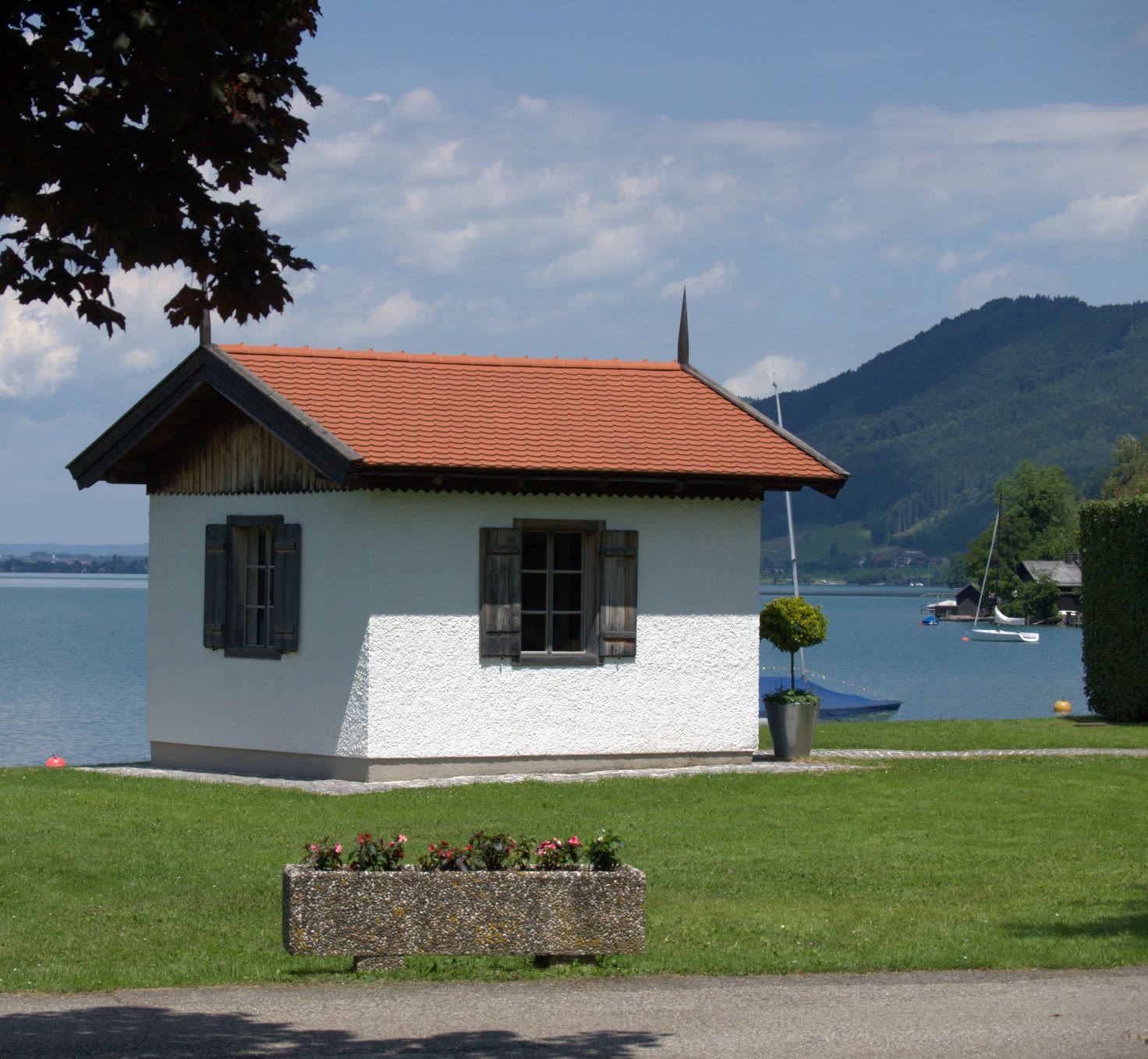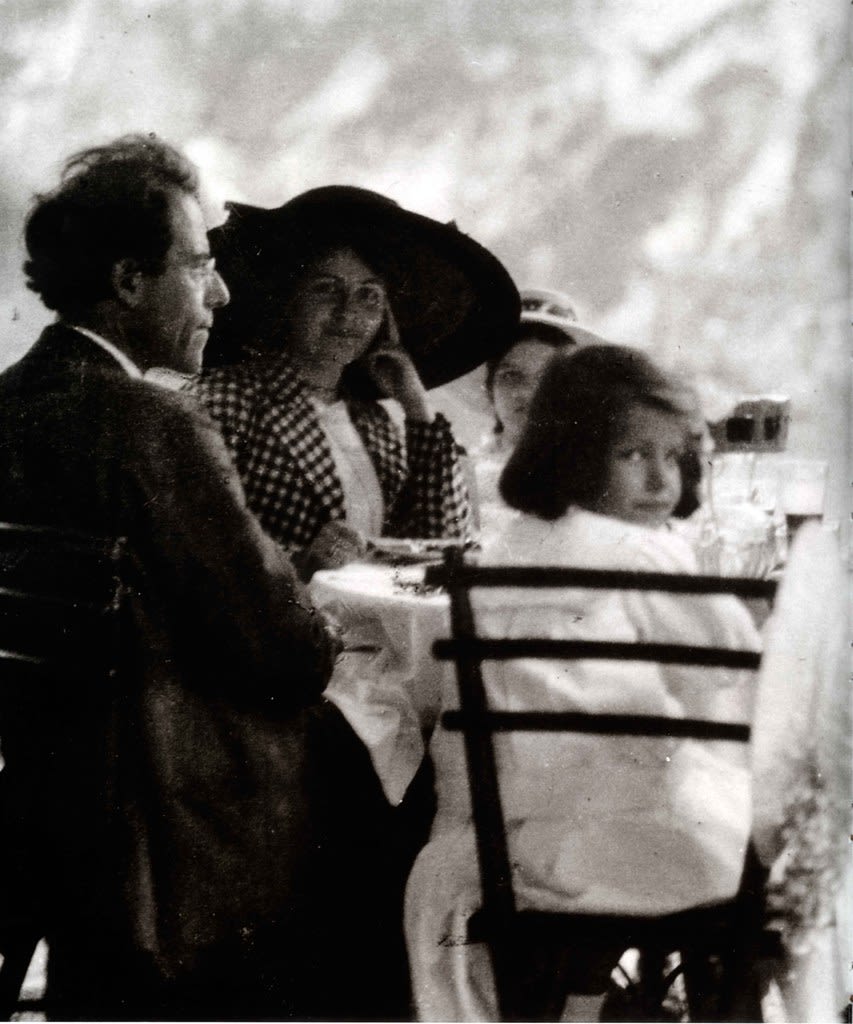Gustav Mahler
In Profile

7 JULY 1860
BORN …
… in Kalischt, Bohemia (the most Western part of today's Czech Republic). The Mahler family belonged to a German-speaking minority among Bohemians, and were also Jewish.
'I am three times homeless, a native of Bohemia in Austria, and Austrian among Germans and a Jew throughout the world.'
Mahler found and fell in love with his grandparents' piano when he was just four years old. He became a local 'Wunderkind' (child prodigy), developing his performance skills with a mature musical vocabulary of street songs, dance tunes, folk melodies and trumpet calls of the local military band.
He gave his first public performance aged ten, and kept on learning until …
1875–79
STUDIES IN VIENNA
Bernhard Mahler, Gustav's father, agreed to let him audition for the Vienna Conservatory in 1875, where he was accepted. In his final year, he concentrated on composition and harmony, but later destroyed many of his student compositions as he was so dissatisfied with them.
1880
DAS KLAGENDE LIED
Mahler completed his first major work shortly after finishing his studies at Vienna Conservatory, but it wouldn't be performed for the first time until 1901, by which time it had been revised several times.
1884–88
FIRST SYMPHONY, 'TITAN'
Mahler's First Symphony was considered a remarkable achievement at the time, especially for a composer of just 24. Inspired in part by nature, Mahler's original subtitle for the First's epic finale was 'From Inferno to Paradise'.
There has been music speculation over the years about earlier works that Mahler himself may have destroyed, an idea largely formulated on the basis that the 'Titan' Symphony is far too advanced and mature to be any composer's First!
Symphony No 1, conducted by Valery Gergiev

1888–94
SECOND SYMPHONY, 'RESURRECTION'
The epic Second Symphony deals with themes of life, death, faith and love. Once asked by a young admirer for the key to the 'meaning' of the symphony, he responded:
‘I would regard my work as having failed completely if I found it necessary to give people like yourself even an indication as to its mood-sequence. In my conception of the work I was in no way concerned with the detailed setting forth of an event, but much rather of a feeling.’
Finale, conducted by Semyon Bychkov
Its premiere in 1895 was Mahler's first great success, so much so that his conducting assistant Bruno Walter pinpointed is as the start of Mahler's rise to fame as a conductor. Tragically events in his personal life were to marr the euphoria of 1895's successful premiere; in the same year, Mahler was grieving the death by suicide of his younger brother Otto.
1893–96
THIRD SYMPHONY
Mahler's numerous composing huts have become part of his legend. Removed from the noise and activity of domestic life, the composer wrote his Third Symphony in his hut in Steinbach am Attersee, Austria.
Further reading: Composers in self-isolation
At its premiere, the Third Symphony generated both praise and outrage from critics, some of whom were bewildered by its enormity.
Opening of Symphony No 3, conducted by Valery Gergiev 2008

'The symphony must be like the world.
It must embrace everything.'
1891–97
HAMBURG
Mahler was appointed Chief Conductor of the Hamburg Stadttheater.
1897–1907
VIENNA
Having moved to Vienna, then governed by the newly-elected and anti-Semitic mayor, Karl Lueger, the Jewish-born Mahler found himself needing to make an early statement as to his German cultural credentials. He made his mark with performances of Wagner's Lohengrin and Mozart's The Magic Flute, and shortly after was was appointed Director of the Vienna Hofoper.
1899–1900
FOURTH SYMPHONY
The Classical style of Haydn and Mozart influenced Mahler's Fourth Symphony. With a reduced orchestra, it is the composer's most intimate symphony, ending with a childlike vision of heaven in the final movement, written some years before the full work.
Symphony No 4, conducted by Valery Gergiev
Did you know…?
At the time of his death, the Fourth was the most frequently performed of Mahler's symphonies across America, Russia and Europe.
1901–02
FIFTH SYMPHONY & MARRIAGE
Marking a step in a new direction for Mahler's symphonies, the Fifth bears the hallmarks of being written during one of the happiest period's of his life. The Adagietto slow movement, an exquisite love song without words, was dedicated to the composer's future wife, Alma Schindler. They married in 1902.
Symphony No 5, conducted by Valery Gergiev
Did you know…?
By the time he was writing his Fifth Symphony, Mahler had abandoned his first composing hut and moved on to another on the shores of the Wörthersee, Carinthia. Though it afforded him some seclusion so he could compose, Mahler wasn't without his home comforts: servants would lay out his breakfast each morning before having to leave down a separate path so he didn't see anyone at all while he was composing!

1902
MAHLER by Emil Orlik

Gustav Mahler by Emil Orlik, 1902
Gustav Mahler by Emil Orlik, 1902
1903–04, rev 1906
SIXTH SYMPHONY, 'TRAGIC'
'There is only one Sixth,
despite the Pastoral.'
Mahler composed his Sixth Symphony between 1903 and 1904, later revising it in 1906.
Movement 4, conducted by Sir Simon Rattle, 2017
Did you know…?
Mahler did not actually give a name to his Sixth Symphony, neither when it was composed nor when he conducted its premiere in 1906. However, when the symphony was first performed in Vienna, it appeared in the programme as Sechste Sinfonie (Tragische) – Sixth Symphony (Tragic).
1904–05
SEVENTH SYMPHONY
Mahler made sketches of the two Nachtmusik (Night music) movements of his Seventh Symphony shortly after finishing composition on his Sixth, before completing the remaining three movements during the summer of 1905, supposedly in the space of just four weeks!
Mahler conducted the premiere with the Czech Philharmonic in 1908, at a festival to mark the Diamond Jubilee of Emperor Franz Joseph.
Symphony No 7, conducted by Michael Tilson Thomas, 1999
Did you know?
There are echoes of Mahler's Seventh Symphony in certain works by Schoenberg, Berg and Webern, the latter pair having both studied under Mahler. Mahler fiercely defended the originality of Schoenberg's work, and reportedly had to be held back from attacking hecklers at the premiere of his First String Quartet in 1907.

1906–07
'SYMPHONY OF A THOUSAND'
Mahler composed his colossal Eighth Symphony for orchestra, soloists, children's chorus and two mixed choirs. Aside from requiring a huge orchestral and choral forces, the symphony is also unusual in that it is structured in two parts: Part I is an exuberant hymn of praise to the creator spirit, while Part II is a reading of the Final Scene from Goethe’s Faust, portraying 'Faust's redemption through music and love'.
Symphony No 8, conducted by Leonard Bernstein
Did you know…?
The Eighth Symphony was the last of Mahler's works to be premiered in his lifetime.
1907
ILLNESS
Mahler's daughter Maria tragically died from scarlet fever and diphtheria in 1907, at the same time that Mahler learned of the heart disease that would lead to his untimely death just a few years later.
1907–11
NEW YORK
Mahler was appointed Conductor of the Metropolitan Opera and, later, Principal Conductor of the New York Philharmonic.
1908–09
DAS LIED VON DER ERDE
On the centenary of Mahler's birth in 1960, Leonard Bernstein describe Das Lied von der Erde as 'Mahler's greatest symphony'. Despite the obviously symphonic nature of the work, Mahler refused to number it, hoping that way to avoid the curse of the ninth, the superstition that a composer's ninth symphony would be their last.
Das Lied von der Erde, conducted by Sir Colin Davis, 1982
1908–09
NINTH SYMPHONY
Mahler completed his Ninth Symphony in the wake of the death of his first daughter, and as his own health was declining. The effect on the composer is plain to see in his music as he explores many emotions, and swings from manic and fierce, to delicate and serene.
The symphony ends by fading gracefully into silence, a testament to the enduring legacy of this prophetic musical visionary.
Symphony No 9, conducted by Valery Gergiev
18 MAY 1911
DIED …
… in Vienna, Austria.

'Perhaps the greatest farewell symphony written by anybody. In each of the four movements he is saying goodbye to something.'
1960s & 1970s
TENTH SYMPHONY
Years after Mahler's death, musicologist Deryck Cooke produced what he called a 'Performing Version' of the sketches the composer had made for a tenth symphony. Cooke stressed that his efforts were not a 'completion', nevertheless his work was a revelation, showing that the Tenth was on its way to being one of Mahler's most audacious, stirring and magnificently structured symphonies.
Finale, conducted by Sir Simon Rattle, 2018

Always Playing
While the LSO is unable to perform live, our music-making continues online with our Always Playing programme.
We know that music can bring comfort, hope and community in difficult times, and it continues to lift our spirits to connect with our audiences across the world with streamed concerts on our YouTube channel every Thursday and Sunday.
Find out more at lso.co.uk/alwaysplaying.
Also be sure to:
- Subscribe to our YouTube channel where you can watch over 500 videos.
- Follow us on Instagram, Facebook and Twitter for videos from our musicians, quizzes, listening suggestions and more.
- Sign up to our email list to be the first to hear about our new programme.
